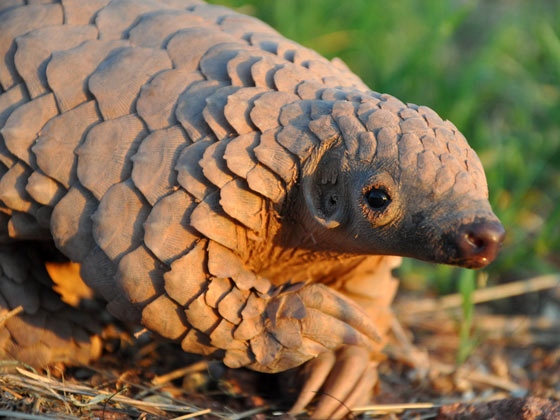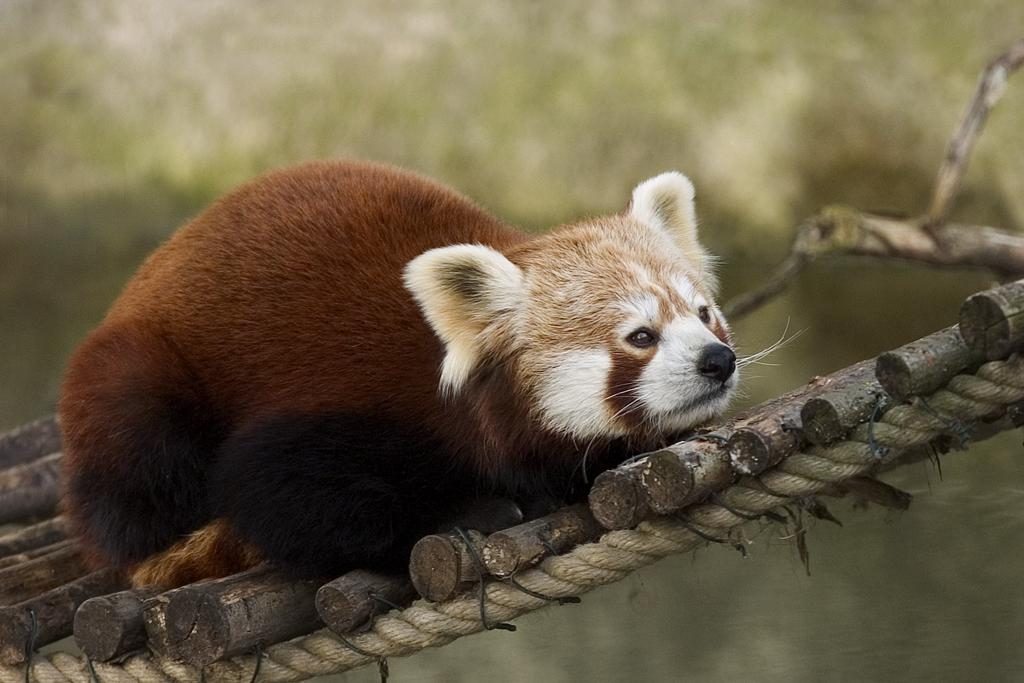From cuddly animals that littered your childhood bed to live ones you’ve probably never heard of, the heartbreaking threat of extinction is a very real prospect for more species than you can imagine. From climate change to human activity, the result will be irreversible if nothing is done to save the creatures on this list.
30. Sumatran Rhino
2018 saw the devastating loss of the last male northern white rhino, potentially signalling the end for the subspecies. The Northern White isn’t the only rhinoceros on the brink of extinction; The Sumatran rhino, the smallest of the living rhinoceros species, faces the same fate. Loss of habitat and poaching has seen the number of Sumatran rhinos dwindle to below 100 individuals (closer to 50 by some estimates).
29. Javan Rhino
Along with the Sumatran and Northern White rhinos, the Javan rhino is also critically endangered. Vietnam’s sole surviving Javan rhino was poached in 2010, leaving the fate of the species down to a group of approximately 60 living in Ujung Kulon National Park in Java, Indonesia. Trophy hunting and illegal trade have driven the Javan rhino to the brink of annihilation, and a combination of habitat loss, natural disaster and disease could sadly be the end of this rhino.
 Wikicommons
Wikicommons
28. Tapanuli Orangutan
With 800 or fewer individuals, the Tapanuli orangutan is the rarest of all great apes, and was only officially announced as a distinct species of orangutan in 2017. Found exclusively in Sumatra, the Tapanuli faces a grave threat from human encroachment and poaching.
27. Sumatran Orangutan
Indonesia has the fastest deforestation rate in the world. As trees are cleared to make way for agricultural and commercial farmland, the habitat of the Sumatran orangutan is being destroyed, fragmenting the orangutans’ range and making them susceptible to poaching and illegal trade. While the Sumatran has a healthier population than the Tapanuli species, with numbers around 14,000, extinction is still a very real threat.
26. South China Tiger
Not having been seen in the wild for more than 25 years, the South China tiger is categorized as ‘functionally extinct’. Considered a pest, the tiger was hunted for decades, so much so that, by 1996, there were believed to be less than 80 tigers left. Today, it’s believed the subspecies is completely extinct in the wild. The last hope for the South China tiger is a conservation program that hopes to reintroduce captive animals back into the wilderness.
25. Malayan Tiger
As the Malayan tiger lost more and more of its habitat to agriculture and commercial plantations, it was driven closer to human settlements in search of food. Seen as a major threat to livestock and a cause of financial loss, the tigers were killed by authorities and angry villagers alike. Thankfully, a decision to allow the hunting of these tigers has been overturned, but it could be too late. There are only around 300 of the species left.
24. Saola
One of the rarest mammals on the planet is the Saola. Translated as ‘spindle horns’ in Vietnamese, the antelope-like Saola was only discovered in 1992. Found exclusively in the mountain ranges of Laos and Vietnam, the exact number of Saola is unknown. Loss of habitat and hunting are major threats to the species’ existence.
23. Amur Leopard
Leopards are more commonly associated with the scorching savannas of Africa than the wet and wintery far east of Russia, but that’s where the Amur Leopard calls home. The world’s rarest wild cat numbers less than 100 as illegal poachers hunt the majestic animal for its beautiful spotted fur. In a bid to save the species, a new protected area named The Land of the Leopard National Park was created in 2012.
22. Eastern Lowland Gorilla
Although only two appear on this list, all four subspecies of gorilla are currently classed as critically endangered according to the World Wildlife Fund for Nature. The eastern lowland is the largest of gorilla species and lives in the eastern range of the Democratic Republic of Congo. Decades of civil unrest and habitat destruction has cut the population of eastern lowland gorillas by over 50% in the past two decades.
21. Mountain Gorilla
Africa’s mountain gorilla represents a bit of an anomaly for this list. Despite enduring years of human conflict, habitat loss and disease (they can die from a human common cold) numbers of the furry great ape are actually on the up. In the past two decades, the population has risen from 620 to 880. While that’s obviously an encouraging sign, the mountain gorilla remains on the critically endangered list for now. Let’s hope they continue to bounce back.
20. Vaquita
The Vaquita is another animal that you’ve probably never heard of, yet balances precariously on the right side of extinction. For now. The porpoise, found exclusively in the northern Gulf of California, is the rarest marine mammal in the world. Characterised by a large, dark ring around the eye, the number of Vaquitas is thought to be between just a dozen to 30 and could become completely extinct as early as this year (2018). The primary factor that threatens to wipe the species out is the illegal fishing of totoaba fish. Vaquitas often get caught in the nets that are used and drown. Relocation attempts have been abandoned following the death of a vaquita, further pushing the animal to the brink of extinction.
19. The Sumatran Elephant
As the name suggests, the Sumatran elephant shares its habitat with the Sumatran rhino, which has already featured on this list. And like the Sumatran rhino, the loss of that habitat is driving the species toward extinction. Over two-thirds of the Sumatran elephants’ natural habitat has been destroyed in the last 25 years, forcing them closer to human settlements in search of food, where they are often met with violence, and sadly death. The current population stands somewhere between 2000 - 3000.
18. Yangtze Finless Porpoise
The second porpoise to feature on this list, the Yangtze finless porpoise is found in Asia’s Yangtze River (obviously). Despite always seeming to have a smile on its face, the future of this animal is a cause for worry. Overfishing has depleted the highly intelligent species’ food supply and subsequently, the population numbered a mere 1000 in 2015. Unlike with the vaquita, however, relocation efforts have seemingly proved successful with the Yangtze finless porpoise and secure populations continue to show promising growth.
17. Hawksbill Turtle
Famed for its beautiful colouring and marking, the hawksbill turtle has long been hunted and killed for its shell. Despite an international trade ban, black market trading still threatens the hawksbill, whose numbers have declined 80% in the last century.
16. Chinese Giant Salamander
It might be the largest amphibian in the world, but that hasn’t saved the Chinese giant salamander from edging toward extinction. The population has decreased by 80% in recent decades. Mainly because it’s considered a delicacy in China. The number of the gentle giants left in the wild is unknown.
15. Chinese Pangolin
The most vulnerable of eight species of pangolin, the Chinese is in danger of being eaten into extinction. The pangolin is noteworthy as it is the only mammal to have scales. Its’ meat is considered a delicacy in China and other Asian countries which has led the remarkably unique animal to become the most illegally traded animal in the world.
14. Philippine Eagle
The beautiful Philippine eagle is one of the largest, most powerful birds of prey in the world. So powerful in fact, that it can catch and carry monkeys from trees! Like so many others, the Philippine eagle has suffered from the loss and fragmentation of its natural habitat. There are only around 250 of these majestic birds left, but the recent decision to make it the national bird of the Philippines has helped to raise awareness of its perilous position on the edge of existence.
13. Black-footed Ferret
The black-footed ferret was actually believed to be extinct as recently as 1981, but it’s estimated that there are around 400 in the wild today after a mini-resurgence. The black-footed, distinguishable by its bandit-like face markings, is North America’s only native ferret species. Diminished populations of prairie dog, the ferret’s main food source, and plague threatened to wipe the species out, but conservation efforts have seen the black-footed ferret cling on to survival.
12. North Atlantic Right Whale
At the time of writing, the calving season of the North Atlantic right whale is coming to an end without a single new baby having been sighted. Couple that with a winter that has seen many deaths for the species, and the future is looking bleak. Experts are beginning to estimate that the right whale, whose population currently numbers around 450, could be extinct as soon as the year 2040. The major threat for the right whale is commercial fishing. Many whales get caught up in lobster nets or are hit by fishing vessels each year.
11. Borneo Pygmy Elephant
Unsurprisingly given the name, the Borneo pygmy elephant is the smallest of Asia’s elephant species. It’s also one of the most vulnerable. In a trend that has plagued the majority of the animals on this list, the loss of habitat through deforestation and conflict with humans has cut the population of the undeniably cute pygmy elephant to around 1500.
10. African Wild Dog
A declining population has earned the African wild dog an unenviable ‘endangered’ status. Disease, competition with other predatory animals and diminished populations of natural prey have seen numbers drop to between 5000 - 7000 across southern and east Africa.
9. Blue Whale
As we’ve already seen with previous entries on this list, size doesn’t matter when it comes to extinction. Not even the largest, and loudest, animal on the planet is exempt. Wide-scale whaling was the primary reason for the decline in blue whale numbers and even though that’s no longer an issue, pollution and climate change still represent a considerable threat.
8. Humphead Wrasse
With thick lips and a protruding forehead, the humphead wrasse fish is no beauty, but it deserves to be protected the same as any other animal. The enormous coral reef fish is considered a highly valuable commodity in the lucrative live reef fish industry in Asia and has been overfished as a result. The extinction of the humphead wrasse would not only be a crying shame in itself but would disrupt the ecosystem of the reefs they live in.
7. Red Panda - Endangered
You’d be forgiven for thinking that the celebrity status giant panda is at greater risk of extinction than the red panda, but you’d be wrong. The plight of the red panda, which is known as the fire cat, reads a lot like the rest of the animals on the list. Its habitat is being destroyed and its numbers are dwindling as a result. When will we learn?
6. Whale Shark - Endangered
Yet another giant that finds itself in a perilous decline. Numbers of the whale shark, estimated to be in the tens of thousands, are seemingly high compared to others on this list, but the population has declined more than 50% in the last 75 years. Illegal fishing has been the major contributing factor to the largest fish in the world becoming an endangered species.
5. Ganges River Dolphin - Endangered
Unfortunately for the Ganges River dolphin, its natural habitat is within one of the most densely populated areas in the world. Human competition for fish and water pollution have seen numbers of the freshwater dolphin fall to a little over 1000, placing the species firmly on the endangered list.
4. Galápagos Penguin - Endangered
The Galápagos penguin is the rarest species of penguin in the world and the only one to be found north of the equator. A higher frequency of intense storms battering the penguins homes’ and a difficulty for the birds to maintain nests has resulted in their numbers shrinking below 2000. A project to introduce artificial nests to the penguins home is currently ongoing.
3. Bonobo - Endangered
Most people will know the chimpanzee, but not many will know the similar looking species of bonobo. Both share 98.7% of DNA with humans, making them our closest living relatives, and both share an endangered species status. It’s unknown exactly how many bonobos remain in the wild, but most experts agree the number is well below 100,000. Bonobos have long been hunted for medicinal purposes; it’s believed certain bonobo body parts can increase sexual vigour. The other major threat? You guessed it, loss of habitat.
2. Mary River Turtle a.k.a ‘Punk Turtle’ - Endangered
It’s not hard to see why the Mary River Turtle got its nickname. The strands of green algae that grow on its head give it a very unusual look. It’s not just looks that are unusual with this fella though; it can breathe through its’ genitals too! Native to the Mary River in Queensland, Australia, this species of turtle was recently added to the EDGE (Evolutionarily Distinct and Globally Endangered) endangered species list. The Mary River Turtle made the list because it’s believed to have become evolutionarily extinct 40 million years ago and its habitat is becoming increasingly disturbed.
1. Aye Aye - Endangered
Imagine being so ugly that people kill you as a ‘bad omen.’ That’s the sad case of Madagascar’s Aye Aye. But boy is it ugly! If the elf meets vampire vibe wasn’t creepy enough, the lemur species has a long E.T-like middle finger that it uses to fish grubs from trees.





































